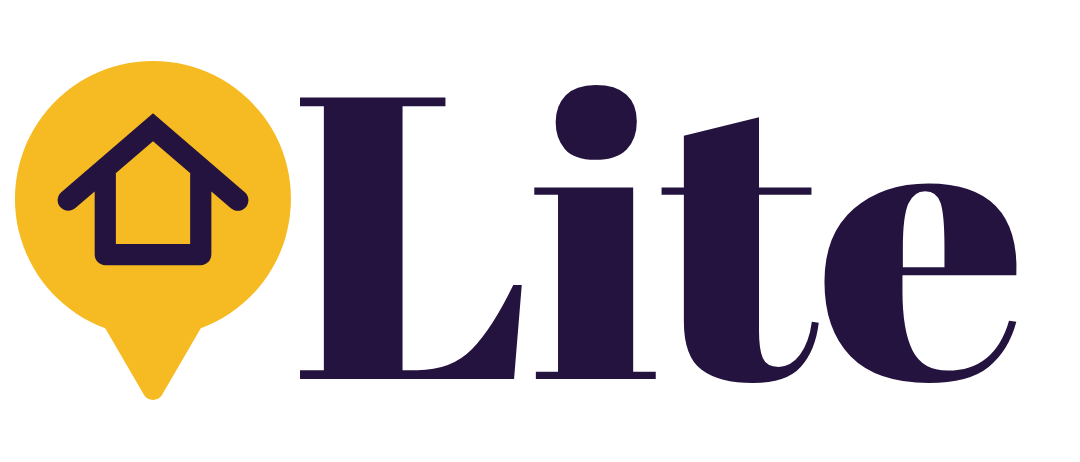Buy to Let Mortgages
Buy to Let mortgages are specifically designed for purchasing rental properties and differ from standard home loans.
A Buy to Let mortgage is for individuals buying property as an investment, rather than a place to live. The property is rented out, and the rental income can help cover mortgage repayments.
Due to higher risks, interest rates are typically higher, and the minimum deposit is usually around 25% of the property’s value, though this can vary. Lenders assess the potential rental income to determine the maximum loan amount and apply stress testing to ensure the rent can cover repayments if interest rates rise.
For landlords seeking flexible ownership, our Let to Buy Mortgages offer an alternative approach.
There are also more complex mortgage solutions tailored to different investment strategies. Understanding the specifics of each option is crucial in choosing the best fit for your circumstances:
SPV Limited Company Buy to Let Mortgages:
An SPV (Special Purpose Vehicle) Buy to Let mortgage is a loan held within a limited company, rather than in your personal name. The SPV company is specifically set up to own and manage rental properties on your behalf.
This type of mortgage can offer tax advantages, making it a more efficient option for some property investors. If you’re looking for a financially strategic way to grow your Buy to Let portfolio, an SPV mortgage could be the right choice.
Read more on our blog: The Benefits of Using a Ltd Company SPV for Buy to Let Property Investment
HMO Mortgages:
House-in-Multiple-Occupation (HMO) mortgages are designed for landlords renting out a property to multiple tenants who are not from the same household or family.
You typically need an HMO mortgage if you plan to rent to three or more individuals. These properties can be a great investment opportunity, as they often generate higher rental returns compared to standard Buy to Let properties.
Regulated Buy to Let Mortgages:
Regulated Buy to Let mortgages are used when renting a property to an immediate family member. Unlike standard Buy to Let mortgages, which are not regulated, these mortgages fall under stricter guidelines.
A regulated Buy to Let mortgage applies if you or a family member will live in the property, either now or in the future.
Whether you’re a new landlord or expanding your portfolio, we’ll help you secure the right Buy to Let mortgage.
Mortgage Advice for Buy to Let Mortgages
Whether you’re a new or experienced property investor, you likely have questions and concerns about Buy to Let mortgages.
A discussion with a mortgage adviser can provide clarity, answer your questions, and guide you through the process—helping you move forward with confidence. Contact us today!

Get in Touch with an Expert
Request a call back from a mortgage adviser at PLS Financial Services by entering your details below. One of our experts will be in touch with you soon.
Who are PLS Financial Services?
Lite Mortgages is a business introducer for PLS Financial Services Ltd, an authorised firm regulated by the Financial Conduct Authority (FCA). With over 15 years of experience as an independent broker, PLS offers a comprehensive range of mortgage services for all types of borrowers, along with free initial mortgage advice.
Their dedicated mortgage brokers are available five days a week, providing friendly, honest guidance throughout the application process. With access to a wide range of mortgage products, they offer personalised financial advice to help you secure the most competitive mortgage deal, tailored to your individual needs and circumstances.
Why use PLS Financial Services?

Streamlined Process
Whether you’re remortgaging, purchasing, or moving home, the process can feel overwhelming with countless tasks to manage. At PLS Financial Services, we take the stress out of securing your mortgage, so you can focus on settling into your new home.
From assessing affordability to finding the best mortgage rates, our expert team will guide you every step of the way—making the process as smooth and hassle-free as possible.
Access to Best Rates
Financial Guidance
Save Time and Money
Post-Move Support
Our relationship doesn’t end once your mortgage is secured. We’re here for the long run—whether you need help with future mortgages or financial advice on pensions, savings, or investments.
Can I purchase a buy to let property as a first time buyer?
Yes, a first-time buyer can become a Buy to Let landlord, but securing a Buy to Let mortgage may be more challenging than getting a standard residential mortgage.
Here are some key points to consider:
Rental income
For a Buy to Let mortgage, most lenders require the rental income to cover between 125% and 145% of the monthly mortgage repayments.
Please note that if your first property isn’t one that you will live in yourself, you won’t qualify for first-time buyer stamp duty relief.
Do I pay more stamp duty when buying a buy to let property?
When purchasing a Buy to Let property, you’ll likely pay higher Stamp Duty due to government changes introduced in 2016.
Anyone buying an additional property must pay a 3% surcharge on top of the standard Stamp Duty rates.
To estimate your Stamp Duty costs, try our Stamp Duty Calculator.
Can you get a product transfer on a buy to let property?
Your monthly mortgage payment is key to calculating your property’s profitability, so it’s essential to have the right mortgage for your needs.
Many Buy to Let mortgages have an end date, after which the loan switches to a higher lender rate. At this point, landlords often explore new lenders or consider remortgaging.
We assess whether your current lender can offer a better deal and recommend the best option for you. However, there’s no guarantee that rental income will always cover mortgage payments. Staying with your current lender may have advantages, such as fewer checks, less paperwork, and no additional valuation or solicitor fees.
Can I get a buy to let mortgage with bad credit?
For Buy to Let investors with a history of bad credit, securing a mortgage may seem challenging. The good news is that some lenders are willing to assist potential investors, offering options tailored to different financial situations.
What fees can be involved in your buy to let purchase?
Valuation Fee
A mortgage valuation fee covers the cost of assessing the value of the property you plan to buy. This mortgage valuation is carried out by a certified surveyor or an Automated Valuation Model (AVM) to confirm if the property qualifies as suitable collateral for your mortgage.
The valuation cost varies by lender and property price, typically around £300, but it may be higher for high-value properties. Some lenders include this valuation at no extra cost.
It’s important to note that this valuation is for the lender’s benefit only, not yours. If you need a more detailed assessment, consider:
- Homebuyer’s Survey (RICS Level 2 Survey) – Ideal for conventional properties in reasonable condition, providing insights on repairs and maintenance.
- Full Structural Survey (RICS Building Survey) – A comprehensive inspection for older, unusual, or heavily modified properties.
For tailored mortgage advice, get in touch with us today.
Booking/Reservation Fee
A booking fee (also known as an application or reservation fee) is a charge some lenders require when you apply for a mortgage. It helps secure the loan during the application process.
This fee typically ranges from £100 to £300 and is usually paid upfront. However, not all mortgage deals include a booking fee, so it’s worth checking before applying.
Telegraphic Transfer/CHAPS Fee
A telegraphic transfer fee (also known as a CHAPS fee) is a charge for transferring mortgage funds to the seller’s solicitor on completion day. This ensures a same-day transfer between banks.
The fee is usually £25 to £50 and is either added to your mortgage amount or deducted from the funds transferred.
Broker Fee
When using a mortgage broker, you may need to pay a broker fee for their services, such as arranging the mortgage and providing expert advice.
The fee structure varies—some brokers charge a fixed fee, while others take a percentage of the loan amount.
Solicitor/Conveyancing Costs
Solicitor fees are charges for the legal services provided by a solicitor or conveyancer when buying a property. These services include conducting local searches and handling fund transfers to complete the purchase.
The cost of solicitor fees varies based on the complexity of the transaction and property value. On average in the UK, these fees, including disbursements, are around £2,339. However, costs differ depending on the property type, value, and location.
Before proceeding, always request a detailed quote from your solicitor or conveyancer to ensure you understand all costs. A mortgage broker can assist with this!
Stamp Duty Land Tax
Stamp Duty is a tax that usually applies when buying a property in the UK. The amount you pay depends on your personal circumstances, the property price, and its location within the UK.
Use our Stamp Duty Calculator to determine how much you may owe in your specific situation.
Frequently asked questions
Can I get a mortgage if I have irregular income?
Yes, it’s possible to get a mortgage with irregular income, but lenders will assess your financial situation carefully. Here’s how different income types are considered:
Employed with a Permanent Contract
- Lenders verify your basic annual salary.
- Overtime, commission, or bonuses are averaged (usually over 3 months).
Zero-Hour Contracts / Irregular Hours
- Most lenders require a minimum of 12 months’ employment history in the same role.
- The income used will depend on the lender’s criteria.
Self-Employed Applicants
- A minimum of 12 months trading and at least one year’s accounts is required.
- Lenders typically use an average of the last two years’ declared income (or the latest year if lower).
- Income is assessed based on your SA302/tax calculation.
Limited Company Directors & Shareholders
- You’ll be considered self-employed if you own a large shareholding.
- Lenders assess income based on salary + dividends or net profit, using tax records and certified company accounts.
Need tailored advice? Speak to a mortgage adviser today to explore your options.
How does my credit score impact my ability to get a mortgage?
Your credit score plays a crucial role in your ability to secure a mortgage. Mainstream lenders use it—along with other factors—to assess your creditworthiness and the risk involved in lending to you. However, each lender has its own in-house scoring system, which is where our expertise can help.
Why Your Credit Score Matters
- Eligibility – A higher credit score increases your chances of mortgage approval. If your score falls below a lender’s threshold, securing a mortgage may be challenging.
- Interest Rates – A strong credit score can unlock lower interest rates, potentially saving you thousands over the life of your loan.
- Loan Amount – Lenders may offer larger loan amounts to applicants with a good credit history.
- Deposit Requirements – If your credit score is low, you may need to provide a larger deposit to offset the lender’s risk.
- Mortgage Approval – Lenders review your credit history in detail. Missed payments, defaults, or bankruptcy could result in your application being declined.
How to Improve Your Credit Score Before Applying
- Pay bills on time – Late payments on credit cards, loans, or utility bills can negatively impact your score.
- Manage credit utilisation – Keep your credit card balances low relative to your credit limit.
- Reduce outstanding debts – Paying down debts improves your credit profile and affordability.
- Avoid multiple credit applications – Applying for several credit products in a short time can lower your score.
Can You Get a Mortgage with a Poor Credit Score?
Yes! Even if your credit score isn’t perfect, specialist mortgage lenders may still be able to help. Some lenders do not use credit scoring but instead assess your application based on set lending criteria. This is why obtaining a copy of your credit report is crucial when applying for a mortgage.
Need mortgage advice? Get in touch with a mortgage expert today!
What are the different types of mortgage interest rates available in the UK?
When choosing a mortgage, it’s important to understand the different types of interest rates available. Each option has its own advantages, depending on your financial situation and preferences.
Fixed-Rate Mortgage
- The interest rate stays the same for a set period (typically 2–10 years).
- Monthly payments remain predictable and stable.
- Ideal if you want protection from interest rate increases.
Tracker Mortgage
- The interest rate follows the Bank of England’s base rate.
- If the base rate changes, your mortgage rate and payments will adjust accordingly.
- Good for those comfortable with fluctuating payments and potential savings if rates drop.
Standard Variable Rate (SVR) Mortgage
- This is the lender’s default rate after your initial deal ends.
- The lender can increase or decrease the rate at any time.
- Usually higher than fixed or tracker rates, making it less predictable.
Discounted Rate Mortgage
- Offers a lower rate for a set period (typically 2–3 years).
- The discount applies to the lender’s SVR, so payments can still fluctuate.
- Can be a good short-term option, but payments may rise if the SVR increases.
Capped Rate Mortgage
- Works like a tracker mortgage, but with a maximum interest rate limit.
- Protects you from significant rate increases while still allowing for savings if rates fall.
- Provides some security with added flexibility.
Offset Mortgage
- Links your mortgage to your savings and current account.
- The interest is calculated on your mortgage balance minus your linked accounts, reducing the total interest paid.
- Can be useful if you have substantial savings and want to lower mortgage costs.
Which Mortgage Interest Rate is Right for You?
The best option depends on your financial goals, risk tolerance, and preference for stability or flexibility.
Need expert advice? Speak to a mortgage adviser at PLS Financial Services today to find the best mortgage deal for your situation.
What is the difference between a mortgage agreement in principle (AIP) and a formal mortgage offer?
An Agreement in Principle (AIP)—also known as a Decision in Principle (DIP) or Mortgage in Principle (MIP)—is a preliminary indication of how much a lender may be willing to lend you based on an initial financial assessment.
Purpose: Helps you understand your borrowing potential before making an offer on a property.
How to Get an AIP: You provide basic financial details (income, employment status, debts), and the lender performs a soft credit check (which does not impact your credit score).
Important Note: An AIP is not a guarantee of a mortgage—it is simply an estimate based on preliminary checks. A full mortgage application is required to secure a formal mortgage offer.
Formal Mortgage Offer
A formal mortgage offer is the lender’s official confirmation that they will provide you with a mortgage. It includes the specific terms and conditions of the loan, such as:
- Loan amount
- Interest rate
- Repayment schedule
- Any special conditions
To receive a mortgage offer, you must complete a full mortgage application. The lender will then conduct:
- A thorough credit check
- Verification of your income & financial documents
- A property valuation
Once the lender is satisfied, they will issue a formal mortgage offer, which moves you one step closer to purchasing your new home.
Is a Mortgage Offer Legally Binding?
No, a mortgage offer is not legally binding. While rare, lenders can withdraw an offer before completion if your financial circumstances change or if new risks arise.
The house-buying process only becomes legally binding at the exchange of contracts stage.
Exchange of Contracts:
- This is when both the buyer and seller commit legally to the transaction.
- If either party pulls out after this stage, they could lose their deposit or face legal action.
- The completion date (when the property officially changes ownership) is set during this stage.
Need more guidance? Our blog on The Conveyancing Process explains this in detail.
How much can I borrow on my mortgage?
Most lenders apply a loan-to-income (LTI) ratio, which typically allows borrowing up to 4.5 times your gross annual income. However, some lenders may offer higher LTI ratios in specific cases.
Example Calculation:
If your gross annual income is £40,000, your estimated maximum mortgage might be:
£40,000 x 4.5 = £180,000
Factors that impact your borrowing capacity:
- Credit score – A higher score may increase loan eligibility
- Existing debts – Lenders consider your current financial commitments
- Monthly expenses – Higher expenses may reduce the amount you can borrow
- Lender policies – Some lenders factor in bonuses, overtime, or self-employed income
Since each lender has different criteria, speaking with a mortgage adviser can help you explore the best borrowing options for your situation.
Buy-to-Let Mortgages
For buy-to-let mortgages, lenders use a stress test that evaluates rental income alongside your personal income.
Key requirements for buy-to-let lending:
- Rental income – Must typically cover 125% to 145% of mortgage payments
- Interest rate stress test – Ensures affordability even if interest rates rise
If you’re considering a buy-to-let investment, a mortgage adviser can help you navigate lender requirements and find the best deal for your investment strategy.
Next Steps
Every lender assesses affordability differently, so it’s essential to get personalised advice. Contact us today for a tailored mortgage assessment and expert guidance.

